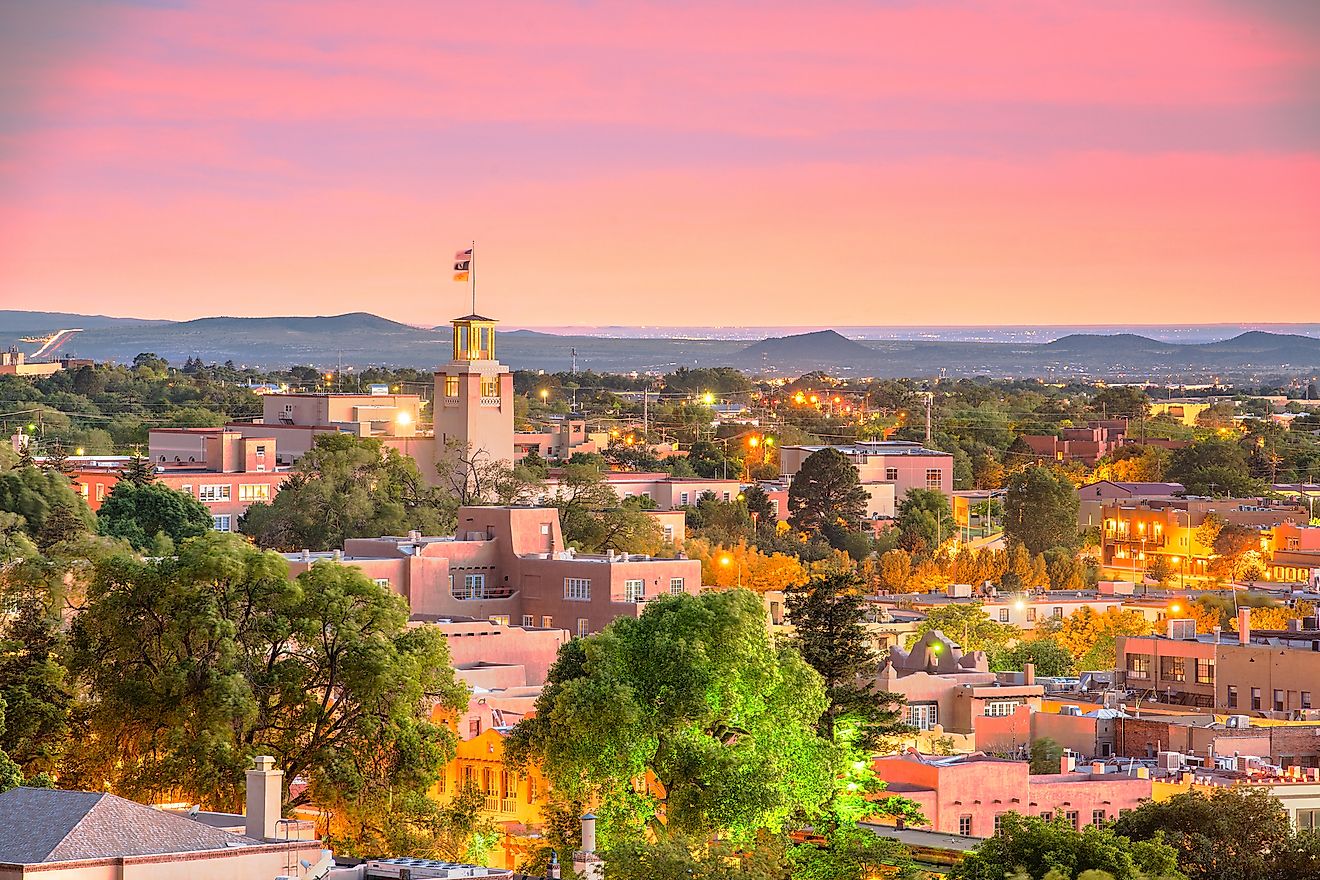What Are The Biggest Industries In New Mexico?

New Mexico is historically a mining and ranching state, but natural resources still contribute significantly to the GDP. Energy, aerospace and defense, logistics and transportation, tourism, food, etc., are some of the state's biggest industries.
A Breif Overview Of The Economy Of New Mexico
Although the mining sector has scaled down on employees, the gas and oil industry of New Mexico contribute over $2 billion in revenues and taxes annually. New Mexico produces the most potash in the United States and holds significant deposits of uranium. The state is on a path to recovery since the economic recession of 2007. In the decade between 2007 and 2017, the GDP rose by about 20%. As of 2019, government and related services was the largest industry, accounting for about 23% of the GDP, which was 1.7% lower compared to the decade before. Finance, insurance, real estate, leasing, and rental jointly account for about 17%. Mining, gas and oil extraction, and quarrying are the largest contributors to the growth of real GDP in New Mexico. The federal government employs about 29,500 people, while the private sector employs about 650,000. New Mexico provides incentives to companies and organizations operating within the state, including tax exemptions and tax credits. Most incentives are awarded based on employment opportunities. State laws allow the state government to provide specialized infrastructure, buildings, and land to companies operating in the state to support job creation.
The Biggest Industries In New Mexico
Energy
New Mexico holds vast deposits of fuel and alternative energy sources. Petroleum and natural gas deposits are found in the San Juan Basin and Permian Basin. The former is the largest natural gas reserve in the United States. New Mexico provides about 3% of crude oil and 10% of natural gas used in the US. Coal deposits are found in the northwest region of the state. The boom in horizontal drilling and hydraulic fracturing between 2010 and 2015 led to an increase in crude oil production in the Permian Basin and other parts of the United States, allowing the country to become the largest crude oil producer in the world. The more than 320 days of sunshine a year makes New Mexico an ideal place for solar energy, while the vast open landscape is used for wind energy projects. Gas and Oil operations contribute to New Mexico’s above-average release of greenhouse gas.
Agriculture
Cattle and dairy products are the top animal products of New Mexico. Livestock grazes the arable lands throughout the year. Although much of the state is dry land, technological farming has enabled the production of hay, chili peppers, onions, potatoes, sorghum, pinto beans, and pinon nuts. Tucumcari, Carlsbad, and Fort Sumner irrigation projects on the Pecos river provide water to irrigate farms in the semi-arid regions. The Rio Grande and Colorado River basin are also crucial for the agriculture industry. Sawmills in Albuquerque steer the timber economy of northern New Mexico.
Aerospace And Defense
New Mexico has an ideal terrain and climate where defense and Aerospace projects can be tested together within restricted airspace. The 18,000-acre Spaceport America is a hub for major industry players such as UP Aerospace and Virgin Galactic. New Mexico also hosts several military installations, including Holloman, Cannon, and Kirtland Air Force bases, Fort Bliss army base, and the White Sands Missile Testing Range. Federal research and development facilities account for about one in 10 jobs in the state. The Los Alamos and Sandia National Laboratories were crucial to the development of the nuclear bomb that ended the Second World War.
Logistics And Transportation
New Mexico’s transport infrastructure, climate, and geographic location are some of the factors that attract logistics and transportation companies to the state. New Mexico’s state borders and the regions surrounding the US border with Mexico are experiencing rapid growth with comprehensive transportation and logistics networks. Manufacturers and military assets rely on transport infrastructure to access markets. The bilingual, binational culture of New Mexico’s population creates a diversified workforce and market.
Tourism, Food, And Retirement
New Mexico is a popular tourist destination due to its conducive climate. Since 2010, tourism spending has been on a gradual increase to reach $7 billion in 2018. The state’s culture, especially its unique spicy foods, attracts tourists to urban environments. New Mexico’s cheaper utilities, readily available labor, affordable land, and low wages attract food and tourism companies and establish the state as a preferred destination. Virgin Galactic set up its headquarters at Spaceport America. The economy of urban New Mexico, mainly Albuquerque, has grown in recent decades. Since the end of the First World War, the city has attracted pensioners, especially among government workers and military veterans. It is also gaining popularity among health-conscious people as it contains enough hospitals per capita. The warm climate has also contributed to the increase in the population of Albuquerque.
Film And Television
The film industry has existed in New Mexico since the late 1890s. Financial incentives and development of production facilities, including the Albuquerque Studios, have created more opportunities for local productions. New Mexico offers tax credit incentives to production companies for computer-generated services produced within the state. Between 2014 and 2017, production spending rose from $160 million $500 million, signifying growth in the industry.
Administrative And Federal Government
About a third of employed New Mexicans work in administrative support positions. Many companies have customer service centers within the state Including Hewlett-Packard, Lowe’s and Alliance Data Systems, Fidelity Investments, and The Gap. The federal government employs about 29,500 people, most of whom work for the National Park Service, the Department of Immigration, and the Bureau of Land Management.











